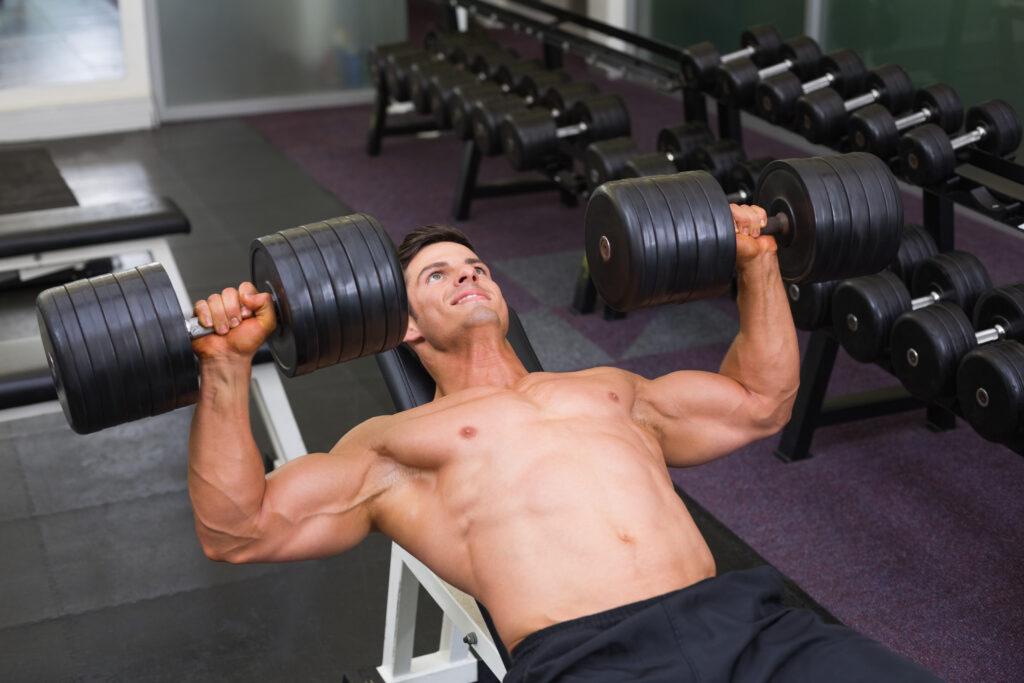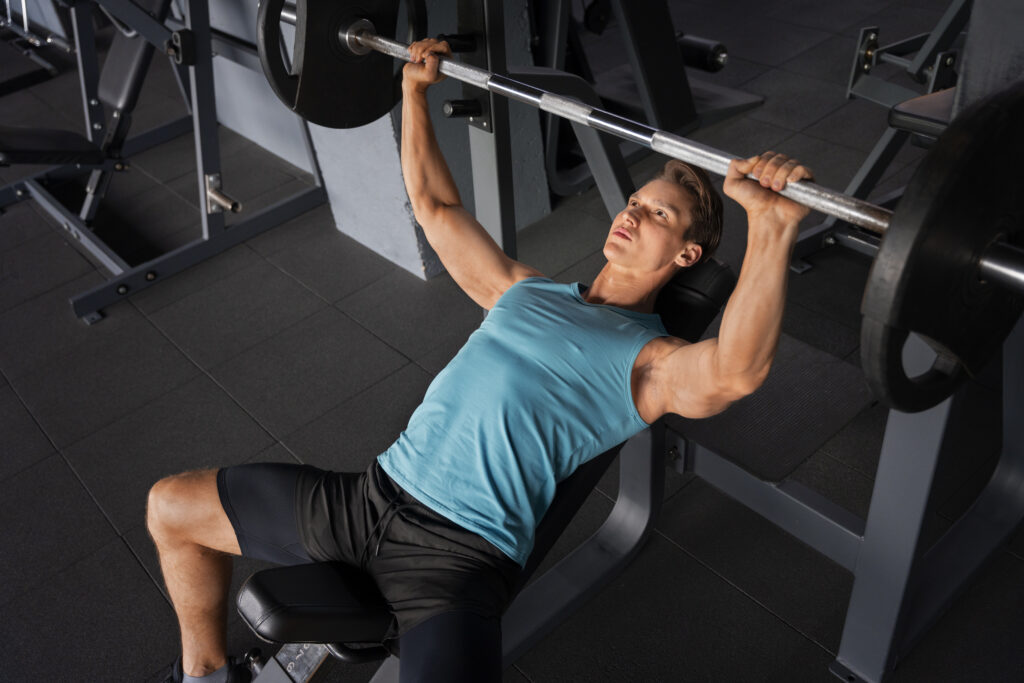Introduction
Building a strong, defined chest is a common goal for gym-goers of all levels—and for good reason. The chest is a major muscle group that contributes not only to upper body strength but also to posture and athletic performance. Whether you’re training for strength, size, or endurance, certain exercises consistently rank at the top when it comes to chest development.
In this article, we’ll break down the four most commonly selected chest exercises you’ll see performed in gyms around the world. Backed by both usage data and electromyography (EMG) research, these movements are tried-and-true staples for maximizing chest muscle activation. Let’s take a look at the four Jefit exercises that we’re featuring.
Popular Jefit Chest Exercises
1. Barbell Bench Press
- Why it’s popular: Considered the king of chest exercises, it’s a compound lift that targets the pectoralis major and also works the shoulders and triceps.
- EMG Insight: High activation of both the sternal (middle) and clavicular (upper) portions of the chest.
- Variations: Flat, incline, and decline bench press.
- Jefit exercise

2. Dumbbell Bench Press
- Why it’s popular: Allows for a greater range of motion and better muscle activation compared to the barbell press. Also improves muscle balance between sides.
- Bonus: Less stress on the shoulder joints for many lifters.
- Variations: Flat, incline, and decline bench press
- Exercise description
3. Chest Fly (Machine or Dumbbell)
- Why it’s popular: Great isolation movement for the pectorals. Often used as a “finisher” at the end of a workout.
- Machine vs Dumbbell: The machine version is more stable and beginner-friendly, while dumbbells challenge stabilizer muscles more.
- Machine Chest Fly or Dumbbell version.
4. Push-Up
- Why it’s popular: Bodyweight, no equipment required, and very scalable.
- Research says: Studies show that standard push-ups can activate the chest muscles similarly to the bench press, especially when resistance or incline is added (like weighted vests or deficit push-ups).
- A versatile movement. Can be perform with wide, narrow, or diamond hand positions. Progress to incline/decline variations then to T-Push-ups, weighted vest or plyo push-ups.
- Jefit exercise.
Final Thoughts
Whether your goal is to build muscle mass, improve strength, or simply enhance the aesthetics of your upper body, incorporating these four time-tested Jefit chest exercises into your routine is a smart move. The barbell bench press and dumbbell press provide a solid foundation for heavy, compound movement, while chest flys and push-ups offer excellent ways to isolate and engage the chest from different angles.
The keys to long-term success are maintaining proper form, progressively overloading your muscles, and giving your body adequate recovery time. Mix and match these movements based on your experience level and training goals, and you’ll be well on your way to a stronger, more sculpted chest.
Jefit: Discipline Drive Greatness in the Gym
If you’re serious about building muscle, tracking workouts, and reaching your fitness goals in 2025, the Jefit strength training app is the perfect tool to help you succeed. With over 20 million downloads and 12+ million users, Jefit is one of the best tracking apps for strength training. Recognized as the Best Fitness App of 2024 and featured in Men’s Health, PC Magazine, and USA TODAY, Jefit stands out with its user-friendly design, advanced workout tracking, and over 42,000 five-star ratings. Whether your goal is to gain strength, track progress, or optimize protein intake, Jefit has everything you need. Remember, sustainable progress is built on consistency, science, and patience.
References
Schoenfeld, B. J. (2010). “The mechanisms of muscle hypertrophy and their application to resistance training.” Journal of Strength and Conditioning Research, 24(10), 2857-2872.
https://doi.org/10.1519/JSC.0b013e3181e840f3
Boone, J., & Stoutenberg, M. (2013). “Comparison of electromyographic activity during push-up variations and bench press.” Journal of Strength and Conditioning Research.
[Study summary link (via NSCA or PubMed)]
Glass, S. C., & Armstrong, T. (1997). “Electromyographical activity of the pectoralis muscle during incline and decline bench presses.” Journal of Strength and Conditioning Research, 11(3), 163–167.
https://doi.org/10.1519/00124278-199708000-00006
American Council on Exercise (ACE) Study (2012). “Best Chest Exercises: ACE-Sponsored Research.”
https://www.acefitness.org
- Whey vs. Casein: What’s the Best Protein for Building Muscle - April 18, 2025
- Four Popular Jefit Chest Exercises Backed by Science - April 16, 2025
- 4 Must-Have Exercises Backed by Science for a Full-Body Workout - April 14, 2025
